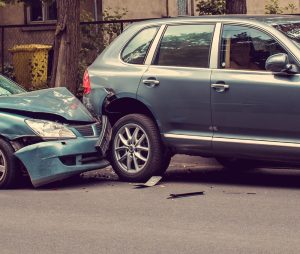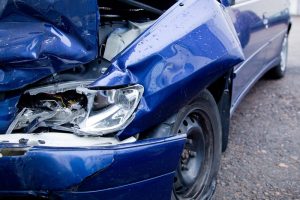Home > Car Insurance > Third Party Property Damage Car Insurance
Third Party Property Damage Car Insurance
See how you can compare the best Third Party Property Damage insurance policies on the market.
Author
Savvy Editorial TeamFact checked

Australians certainly aren’t short on choices when it comes to insuring their vehicles. As such, it’s important to be fully aware of all the options on the market before making their ultimate decision. Third Party Property Damage (TPPD) insurance is one of these, so we’ve broken down everything you need to know about it and the areas you can use to compare between the best policies on the market. Gathering quotes can be the first step you take towards finding yourself the perfect policy. Read on to find out more.
How does Third Party Property Damage insurance work?
Of all the optional forms of cover available in Australia, TPPD insurance is the simplest in structure. There’s only one thing that TPPD insurance will usually cover: damage to another party’s vehicle or property for which you’re at fault. This extends to liability cover, which will give you a helping hand financially if you enter legal proceedings with another party due to an incident. Insurance policies of this nature don’t cover damage to your own vehicle in an at-fault accident, nor does it cover any other type of damage to your vehicle.
A major benefit arising from this fact is that TPPD insurance premiums are usually the cheapest on the market, with some costing as little as $20 per month. Injuries sustained by, or death to, another party in an at-fault accident is covered by a different type of insurance called Compulsory Third Party (CTP) insurance. Like TPPD cover, CTP insurance is designed for that sole purpose and doesn’t cover any kind of vehicle damage. A combination of these two types of insurance can protect you from having to pay significant bills wholly out of pocket, which could uproot your financial situation in the worst-case scenarios.
Who might benefit from Third Party Property Damage insurance?
While it’s true that TPPD vehicle insurance isn’t for everyone, there are certain people and circumstances that may warrant consideration of this type of policy. Firstly, if you’re a low income-earner and can’t afford comprehensive car insurance, TPPD or Third Party Fire and Theft (TPFT) insurance are likely to contain more manageable premiums for you.
Also, if you own a car, motorcycle or other vehicle that’s not particularly valuable, a Third Party Property Damage insurance policy may be beneficial to you. Low-value vehicles tend to be easier to replace and pay for out of pocket, so you might prefer to do that than pay for coverage which may work out to be more expensive. This enables you to focus your attention on any damage you may cause to another person’s vehicle or property, which could cost considerably more than your own if you’re particularly unlucky. For example, if you’re driving an old, beat-up ute worth a few thousand dollars that writes off a brand-new sports car, the damage to your car will be the least of your concerns if you’re uninsured.
What will influence the cost of my Third Party Property Damage insurance premiums?
Your insurer will take into account several key factors when considering what rate your car insurance premiums will be charged at. If you can present yourself as a desirable customer in as many of these categories as possible, you could be offered extremely affordable premiums.
1. Your personal profile
Who you are as a person and a driver is very important to an insurance provider. The two major points of consideration will be your age and your driving history, while your gender will also factor into your premium calculations. Younger drivers typically aged 25 or under, or those with less experience, will almost always attract higher premiums, as they’re seen as being in the riskiest age bracket for accidents on the road. The older and more experienced you are, the better. Your driving history will also be a major consideration for insurance providers. If you’ve built up a history of at-fault accidents in the past, your insurer probably won’t have a great deal of confidence in you not continuing that trend. As a result, your premiums will be more expensive compared to those who have a relatively spotless crash record.
2. The make, model and age of your vehicle
Some vehicles are cheaper to insure than others. This may be because they’re more common or manufactured close to home, meaning that it’ll be cheaper for Third Party Property Damage insurance to replace car or other vehicle parts or conduct repairs. Additionally, your car’s safety relative to others will affect your premiums. If an ANCAP or UCSR safety rating indicates that your car is very safe and less prone to accidents, you’ll instil a bit more confidence in your insurer that you won’t have to make as many, if any, at-fault claims.
3. How much you use your vehicle
If you’re on the road more often, you’re more likely to be in an accident: it’s as simple as that. Those who are operating their vehicle frequently, whether for business purposes or simply commuting to and from work, you’ll be charged more for your insurance than others who cut down on their vehicle usage. This means that workers such as truck drivers, taxi drivers and rideshare vehicle drivers will almost always be paying a pretty penny for their car insurance. If you want to find ways to lower your vehicle usage, you could try catching public transport more often or walking, running or cycling to work instead of driving (if they’re feasible options).
4. Any modifications made to your vehicle
This can swing in both directions, as the nature of the modifications will make a difference to what you’ll end up paying for your premiums. If you’ve added features such as a more developed alarm system or additional lighting that add to the overall safety of your vehicle, insurers usually won’t have a problem. Where you might run into trouble is if you start modifying in areas like the engine to make your car more powerful, as these will either increase your premiums considerably or rule you out of mainstream insurance options. If this happens, there are other specialist insurers who can help you. Make sure you always let your insurer know before making any modifications.
5. Where you live
Even though TPPD insurance doesn’t cover damage to your car, insurance providers will still want to know more about where you’ll be keeping it. Some areas are known for greater accident risk, so an insurer will want to know whether you’ll be driving around in areas like these more often. For example, if your home is next to a massive intersection with a substantial history of vehicle crashes, your insurance premiums are likely to set you back quite a bit more.
Types of car insurance you can choose from
The most basic type of optional cover available, TPPD insurance can offer protection for damage caused by your vehicle to other people's property. However, no damage to your vehicle will be covered.
A step up from TPPD, TPFT insurance can also cover damage to your vehicle sustained due to a fire or theft (or attempted theft) in addition to third-party property damage if you're in an at-fault accident.
The most extensive (and expensive) form of cover, comprehensive car insurance can also offer cover for damage to your vehicle in an accident, collision and certain weather events on top of the areas TPFT covers.
The pros and cons of third-party property damage insurance
PROS
Affordable premiums
In the open market of optional vehicle insurance, TPPD is almost always going to be the cheapest in terms of premiums that you’ll be able to get.
Protects against big bills
A TPPD insurance policy could save you tens of thousands of dollars if you get particularly unlucky with an accident, an amount you would’ve been forced to pay out of pocket if you were relying solely on your CTP insurance policy.
CONS
Limited coverage
Compared to other types of optional insurance, TPPD insurance is by far the most restrictive, as it only covers damage to other vehicles or property.
Less freedom with optional extras
You may find that the optional extras offered as part of your TPPD insurance policy are more limited than what you may find in a comprehensive car insurance policy.
Any other third party property damage insurance questions?
TPFT insurance contains the same coverage as TPPD but, in addition, also insures for damage sustained by your vehicle due to a fire and damage to or loss of your vehicle due to theft. This insurance tends to be more expensive than TPPD insurance but cheaper than comprehensive car insurance.
Comprehensive car insurance is the most extensive type of coverage you can receive for your car. Not only does it cover you for damage to another party’s vehicle or property in an accident, but also damage to your car caused by an accident, fire, theft (which includes coverage if it’s stolen) and can cover you for weather-related damage in some cases. Also, optional extras are available on comprehensive car insurance policies to add to the existing coverage offered. As a result of these factors, policies of this nature are the most expensive but provide the best coverage on the market. TPPD covers none of these additional areas.
The cost of premiums is the first major point of comparison when looking at different TPPD insurance providers and policies, as a relatively small difference in monthly payments can add up over a year or two. Additionally, the coverage they provide and any additional extras you might receive as part of your insurance package should be carefully considered.
No – no insurance provider will cover someone for an accident which they’re both at fault for and breaking the law. They’ll have to pay for any repairs or replacements out of pocket in this scenario.
Maybe – some insurers will offer an optional extra called an uninsured motorist extension (UME), which usually covers damage to your vehicle to a set limit of up to $5,000 provided you’re not at fault. If this is something you’re keen to add to your policy, get in contact with different providers to see if they offer this cover.
This will vary depending on the insurance provider you choose to go with, as different providers have different minimum excess requirements. It’s important to note that you can pay a greater amount in excess in exchange for reduced premiums, which is usually called a voluntary excess.
This also depends on who you go with, but it can happen as soon as immediately after your policy is confirmed with your insurer over the phone or online. Other insurers may need further documentation regarding your car and any listed drivers.
Helpful guides on car insurance
Compare car insurance policies with Compare the Market
Explore car insurance options by make
Select your car make and find out how much it may cost to insure, read helpful guides and compare quotes.
Disclaimer:
Savvy (ABN 78 660 493 194, ACR 541 339) provides readers with a variety of car insurance policies to compare. Savvy earns a commission from our partnered insurers each time a customer buys a car insurance policy via our website. All purchases are conducted via our partners’ websites. The integrity of our comparison service is unaffected by our partnerships with those businesses and our effort remains to bring further brands that do not already use our comparison service onboard.
Savvy’s comparison service includes selected products from a panel of trusted insurers and does not compare all products in the market. Any advice presented above or on other pages is general in nature and doesn’t consider your personal or business objectives, needs or finances. It’s always important to consider whether advice is suitable for you before purchasing an insurance policy. We always recommend readers to consult the Product Disclosure Statement (PDS) of different policies before purchasing your car insurance.










